Insider advice and tips for spectators attending the 2014 U.S. Open

The U.S. Open, starting Aug. 25, is a two-week production that will draw upwards of 700,000 fans. For those planning to attend, here are various tips -- gathered from previous years with some new ones thrown in -- for enjoying the last Grand Slam of the tennis season.
Pre-Tournament
With Rafael Nadal out, Roger Federer secures the U.S. Open No. 2 seed
• We'll get the self-promotion out of the way early. The SI.com tennis page will feature S.L. Price, Courtney Nguyen, Richard Deitsch, yours truly and other luminaries. Plus this year, look for data visualizations with stats from IBM, courtesy of the great minds at Aragorn Technologies.
• In addition to ESPN and CBS (in its final year of its deal), the estimable Tennis Channel -- with its Murders’ Row of talent -- will be offering its usual tour-de-force. Check out the TV schedule here.
• The qualifying rounds for the U.S. Open, which start Tuesday and run until Friday, is the best value in sports, and not just because they are free to spectators. It's top-tier tennis featuring at least a few down-on-their-luck players, whose names will sound familiar to casual fans.
• Check out the free, live stream of matches -- available in the U.S. -- on USOpen.org.
• Unless you have a match that day, there's no excuse for dressing like a player when you go to the U.S. Open. You don't wear stirrups to Yankees games or shin guards and cleats to watch Arsenal. Leave the wristbands and rackets at home.
Transportation
Aces and Faults: Serena, Federer and Bryans tally wins ahead of U.S. Open
• Take either the MTA's much-maligned No. 7 train from Times Square, Bryant Park or Grand Central in Manhattan to the Willets Point-Citi Field stop, or ride the Long Island Railroad from Penn Station (recommended especially if the Mets are playing that day). You'll be surprised how civil and efficient the trains are.
• As part of our crowd-sourcing, reader @clarkcomedy notes: You can take a bus to the Open straight from LaGuardia (either the Q23 or the Q48).
• If you insist on private transportation, take a cab over a car service. Also, I recommend you download the Waze app for the latest traffic.
While at Flushing Meadows
Maria Sharapova mocks Ana Ivanovic's medical break during loss
• Buy a program and/or a daily draw sheet when you walk in. The schedule of matches is key for spectating planning, and the program makes for great changeover reading.
• Take the grounds pass over reserved seating in Arthur Ashe Stadium, especially during the first week. You'll have the freedom to walk from match to match.
• @JeffWirth2002: Go to the new Court 5 viewing platform. I was there last week, and it was amazing.
• Root for any and all qualifiers in the main draw. Winning that first round could be the difference between financing another year on tour and quitting the sport.
• Root for the players who could use it. This year, candidates include Alisa Kleybanova, as she continues to try and return from a bout with Stage 2 Hodgkin's Lymphoma; the etoile-crossed Michael Llodra in what could be his final match; Melanie Oudin, provided she makes a main draw; or some no-name who looks to be close to tears. Maria Sharapova, Novak Djokovic and Serena Williams can win with or without your vocal support, but for these other players, it can make a real difference.
Serena Williams feeling 'relaxed' ahead of U.S. Open title defense
• If you own an American Express card, investigate whether you're entitled to a free radio that enables you to hear the TV commentary. (Aside: Whoever does the AmEx U.S. Open sponsorships gets it. These are consistently creative and fun, and it feels completely non-intrusive.) If not, bring binoculars, which come in handy particularly during changeovers -- "I think the trainer is on the court icing down Sharapova's larynx!"
• Watch at least one match on the Grandstand court, one of the better venues in tennis, and on the sleeper, Court 17. Adds @crohanazy: Spectate on Court 13 -- up-and-coming players are often featured on that court. In 2006, I watched Jelena Jankovic and Nicole Vaidisova battle it out, and Stan Wawrinka!
• Complain at least once about the lack of intimacy in Arthur Ashe Stadium. And complain at least twice about the lucky ones in the luxury suites who have prime seats, yet fail to show or have their backs turned away from the court as they eat their canapés and knock back wine. But eagerly anticipate the new roof.
• Arrive early and spend half an hour or so watching players practice. It's weirdly mesmerizing, and you can learn quite a bit about players while watching them hit balls for 20 minutes. Note: Federer often practices serves inside the service line; Richard Williams still, invariably, makes his daughters laugh; Azarenka doesn't grunt.
• Drink a lot of water. While waiting in line at the restroom may not be an ideal way to spend time, it beats dehydration any day.
Simona Halep is relishing her astonishing rise up the WTA rankings
• Speaking of good habits, wear sunscreen -- though bring cream, not aerosol, because some of you have told me that a can won’t make it past security.
• Watch the top players in the boys' and girls' singles draw. One day soon they're likely to play on the big stages (...or not).
• If you walk by a scoring console and see that a match is deep in the fifth set (or third set for women), watch the conclusion, regardless of whether you've heard of either player. It will give you a good sense of just how brutal tennis can be.
• We know. Your fund of funds is crushing it this year. If you fly Delta, the upgrade will come through. You're important. We get it. But don't use your phone during play, and please switch it to vibrate.
• Most of the volunteers are tennis lovers helping the event run smoothly. Likewise, the ushers are just doing their jobs. Bear that in mind when they make you wait for a changeover or deny you unused seats in a section closer to the court.
• Bring an iPad, book, crossword puzzle, fellow tennis fan, etc. to pass the time during changeovers.
• Watch some doubles matches.
• Take a look at the Tennis Hall of Fame exhibit under Louis Armstrong Stadium. It doesn't compete with a trip to Newport, but it's close.
• Again, hydrate. A small Evian bottle may cost you an arm and a leg, so bring your own bottles and fill them up at the dozens of drinking fountains on the grounds.
• Go to the U.S. Open bookstore, which, regrettably, is hidden near the indoor facility.
• Maybe it's desensitization to overpriced ballpark food or New York prices in general, but the food-court fare -- once the subject of so much derision -- no longer seems so overpriced. The food ranges from passable to quite good. The terrific Sam Sifton cooked this up a few years back. The Indian joint is always my personal favorite, but we’re eager to see the addition of food trucks. And if you're willing to splurge, go for the lobster roll -- the line is often the shortest during the crush of the lunch hour.
• Alternatively, check out some of the restaurants in Flushing Chinatown. You can walk there or take the No. 7 train one additional stop. Says @veryape: Queens has the best food in the city. On the way back, stop off at Sunnyside or Woodside for authentic everything!
• I'm serious about the sunscreen.
Roger Federer's Grand Slam Titles
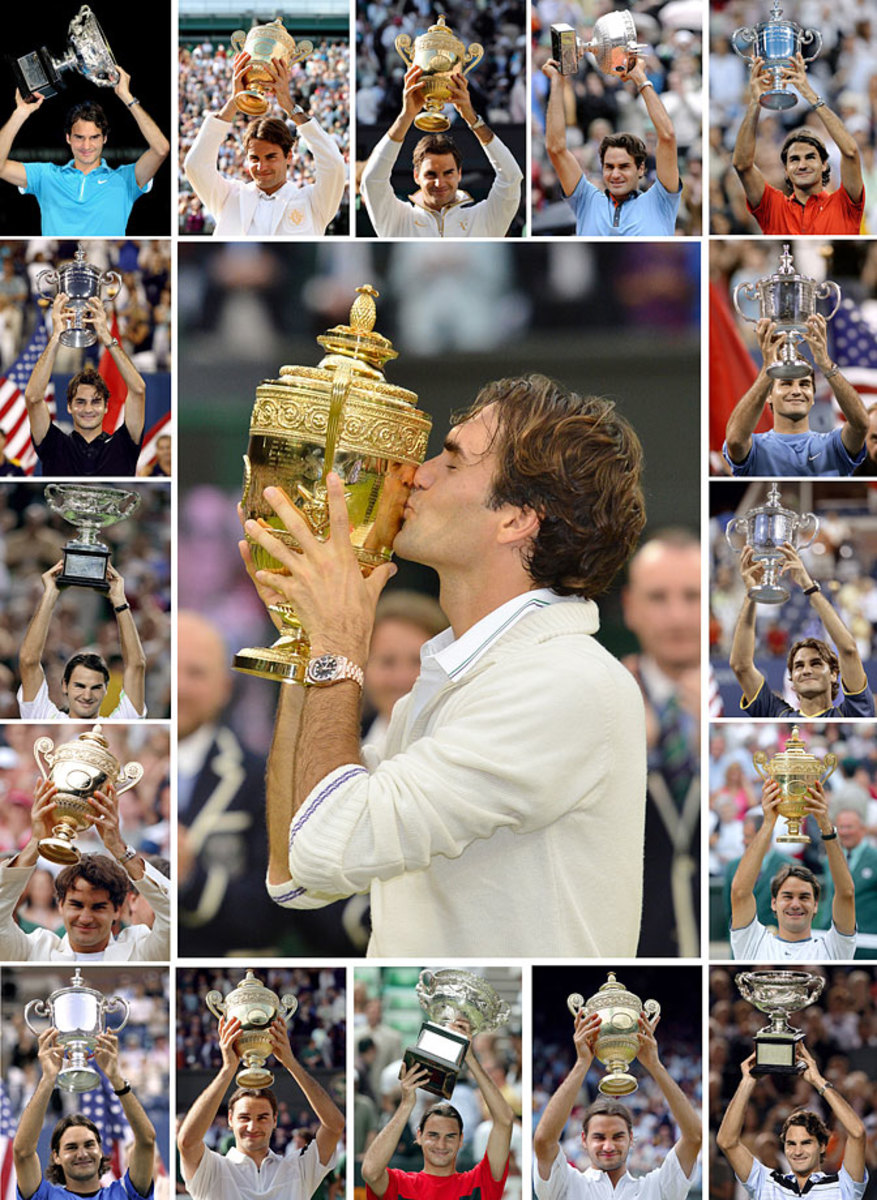
Federer is 17-8 in Grand Slam finals, including 7-2 at Wimbledon.
2003 Wimbledon
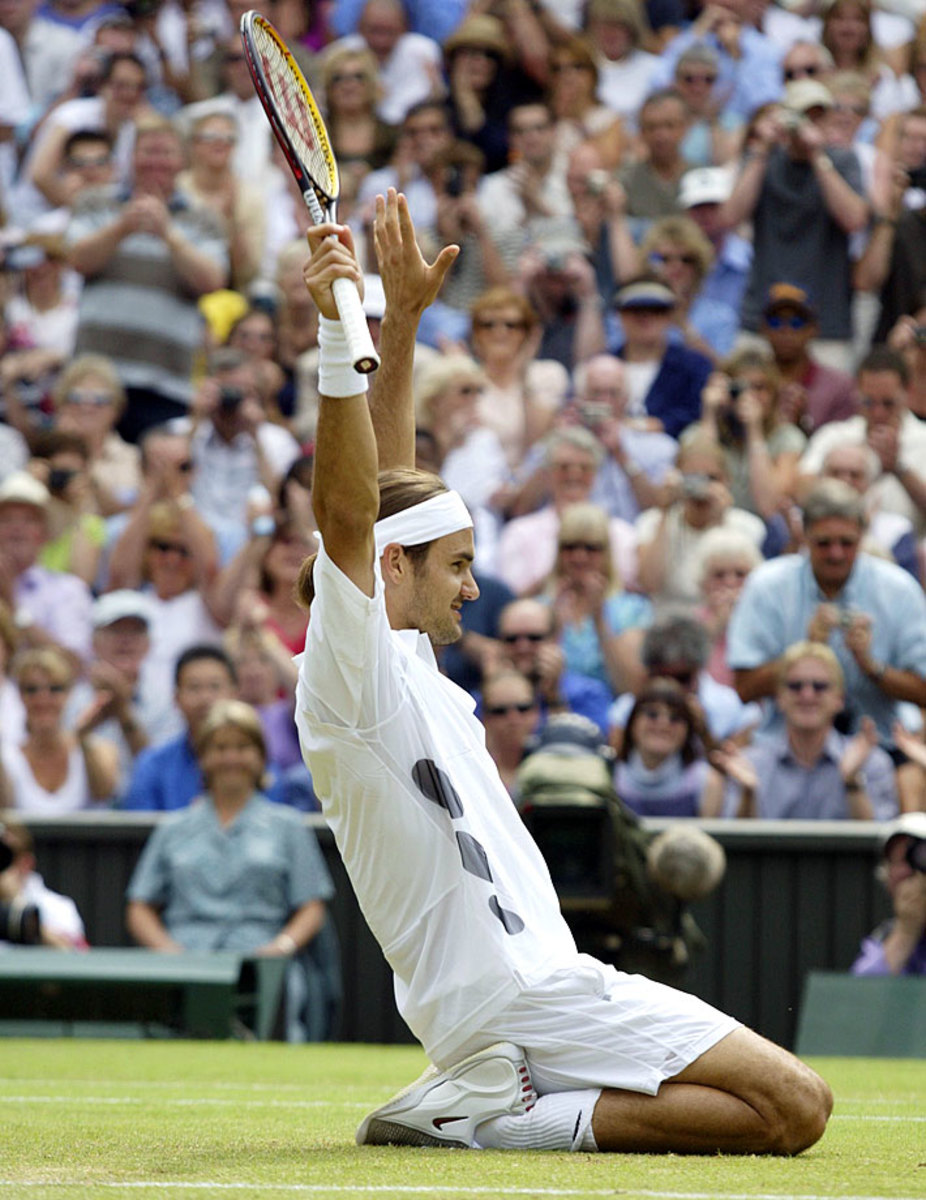
Federer hadn't advanced past the quarterfinals at a major before it all came together at Wimbledon in 2003. Seeded fourth, the 20-year-old Federer defeated Mark Philippoussis in straight sets in the final to become the first Swiss man to win a Grand Slam title.
2004 Australian Open
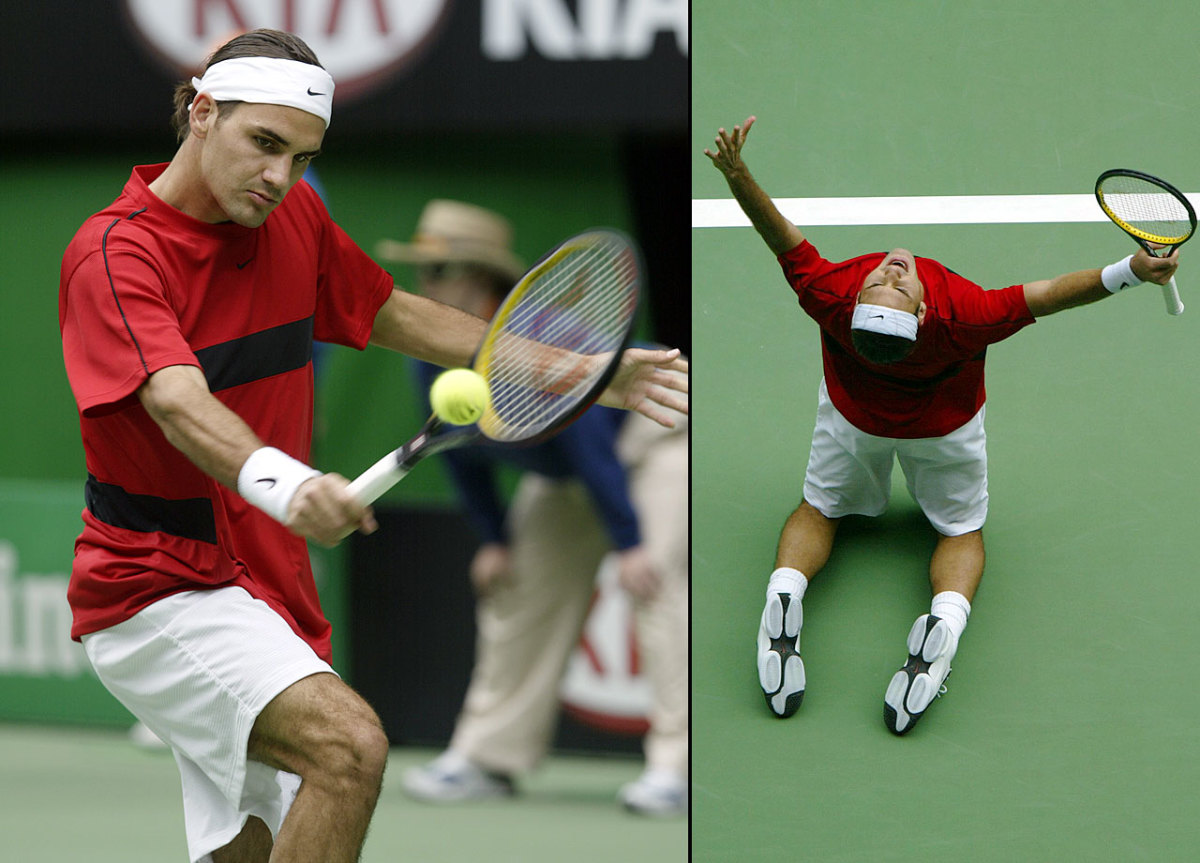
Federer clinched the No. 1 spot in the rankings with his semifinal victory against Juan Carlos Ferrero. He then coasted in the final against the unseeded Marat Safin, who had beaten top-seeded Andy Roddick in the quarterfinals and Andre Agassi in the semifinals.
2004 Wimbledon
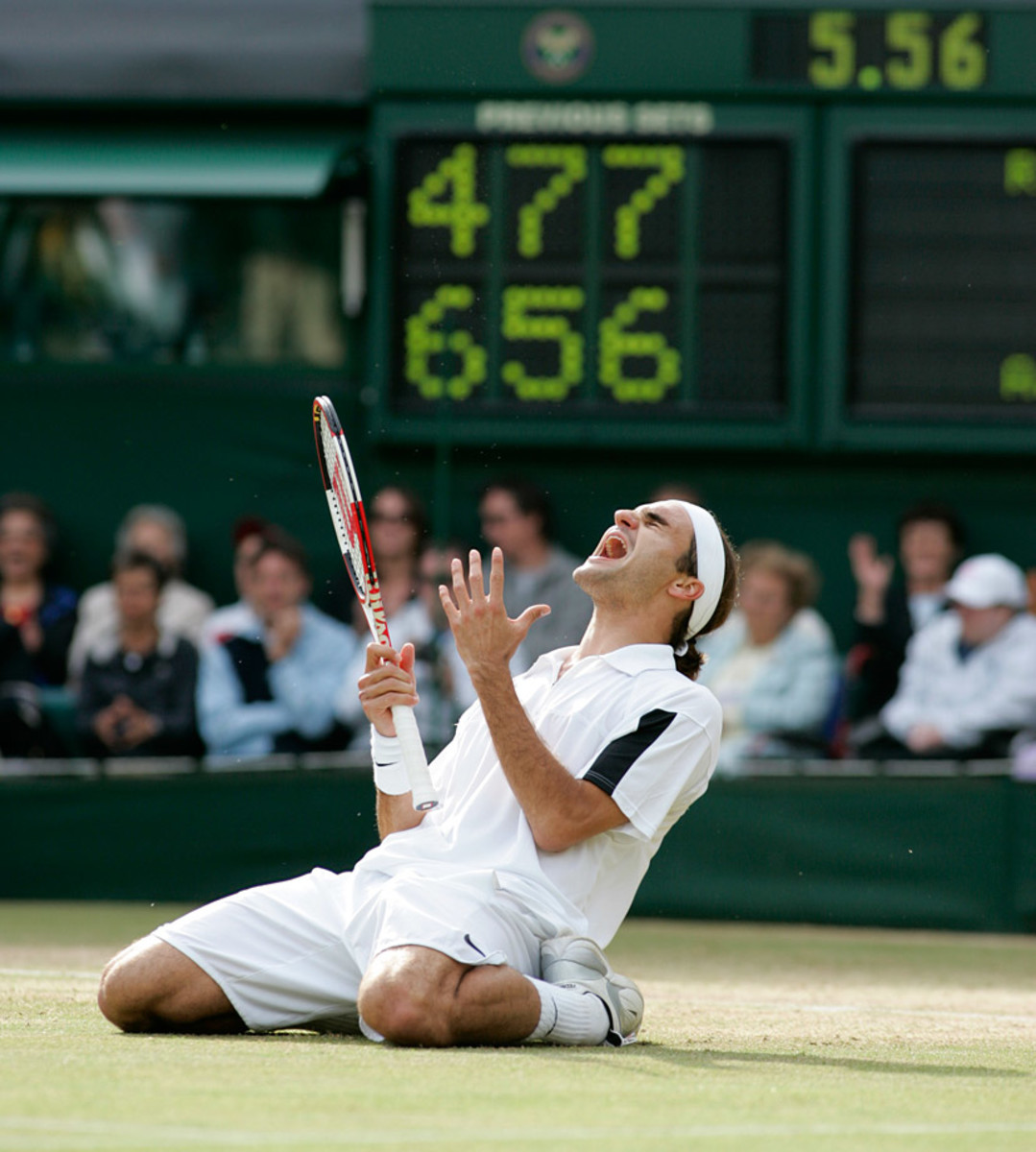
In a matchup of the two top-ranked players, Federer defeated Andy Roddick 4-6, 7-5, 7-6 (3), 6-4 to win his second Wimbledon title in a row. Federer improved to 6-1 against Roddick.
2004 U.S. Open
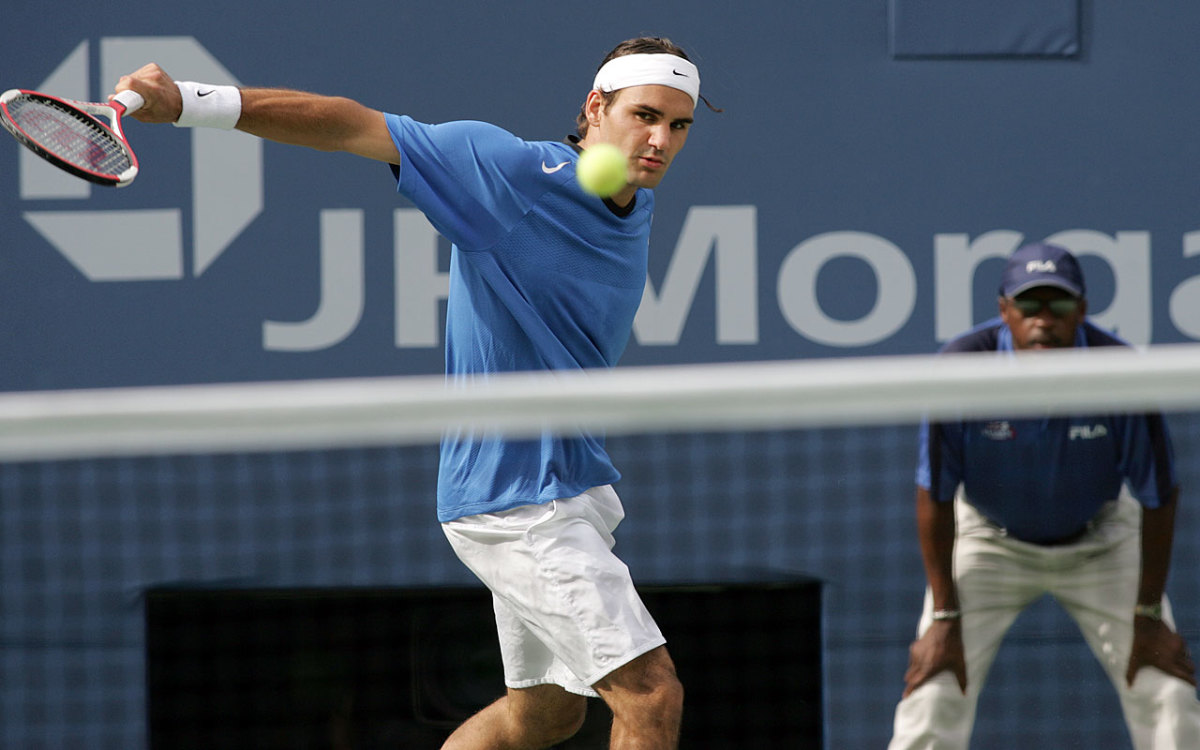
By routing Lleyton Hewitt in the final, Federer added the U.S. Open to his Wimbledon and Australian Open titles to become the first player since Mats Wilander in 1988 to win three majors in a year.
2005 Wimbledon
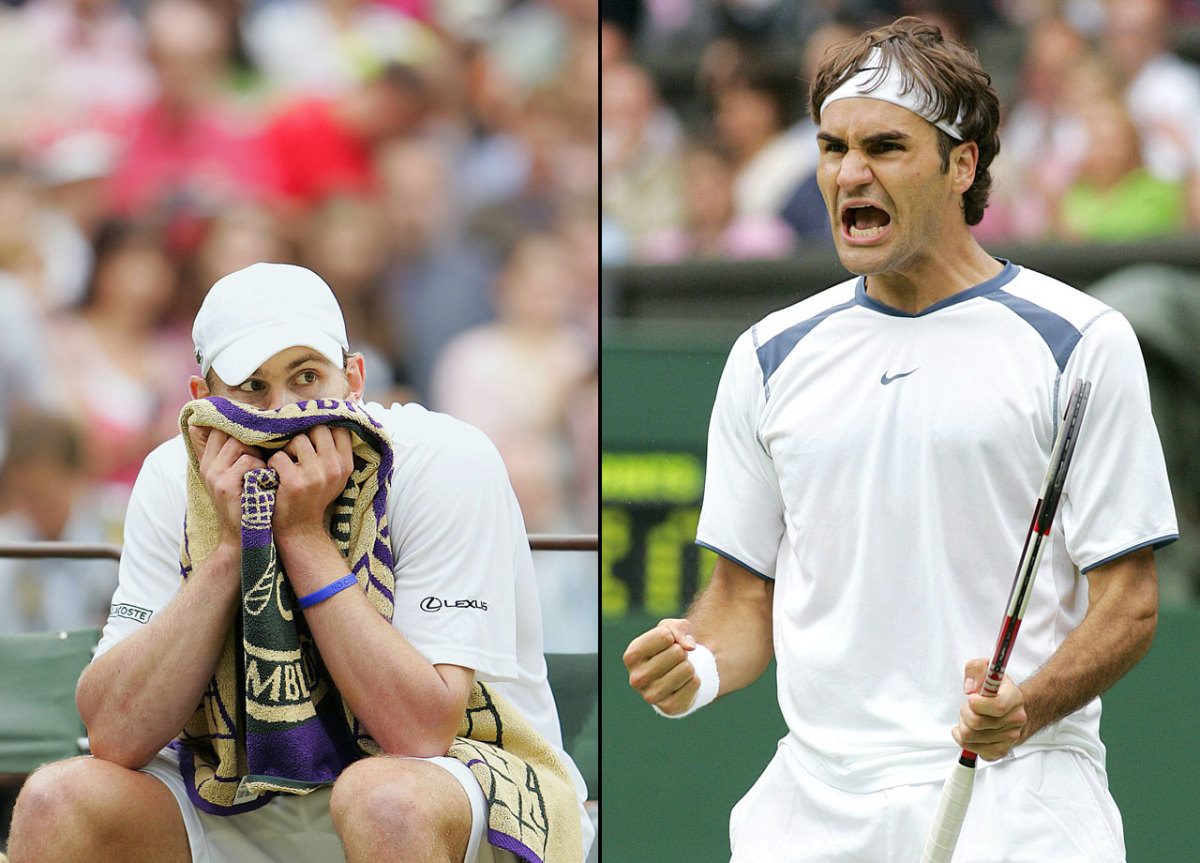
Calling his play in the final "the best in my life," Federer picked apart Andy Roddick 6-2, 7-6 (7-2), 6-4 for his third consecutive Wimbledon title. Federer lost one set in the tournament, to Nicolas Kiefer in the third round.
2005 U.S. Open
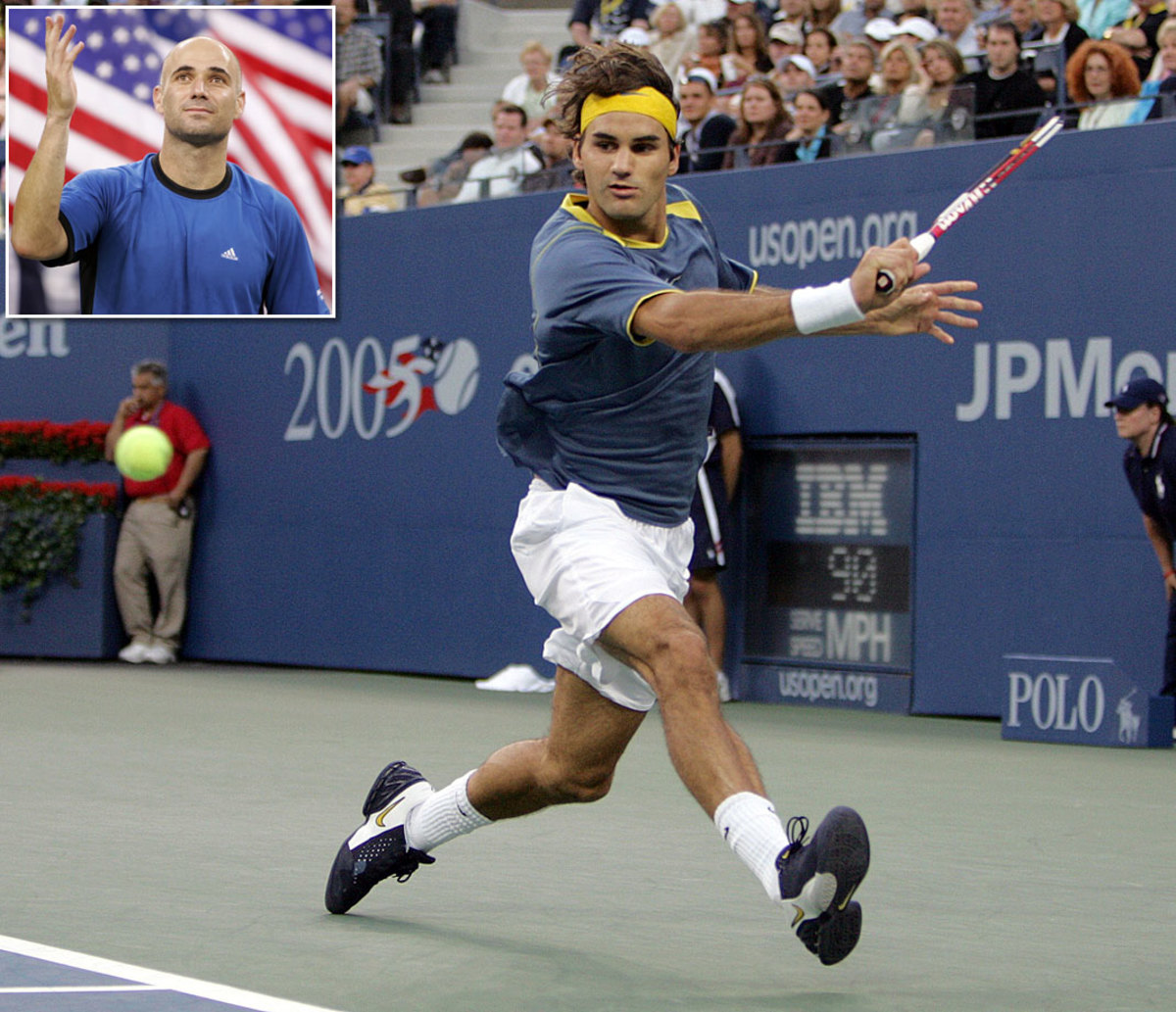
Deadlocked at a set apiece and down a third-set break against 35-year-old Andre Agassi, Federer rallied to win the final in four sets. Federer claimed his sixth major and became the first man in 68 years to win Wimbledon and the U.S. Open in back-to-back years. "The standard and the options and the talent and the execution that he shows in all the biggest matches -- it's crazy," Agassi said after being denied a ninth Grand Slam title.
2006 Australian Open
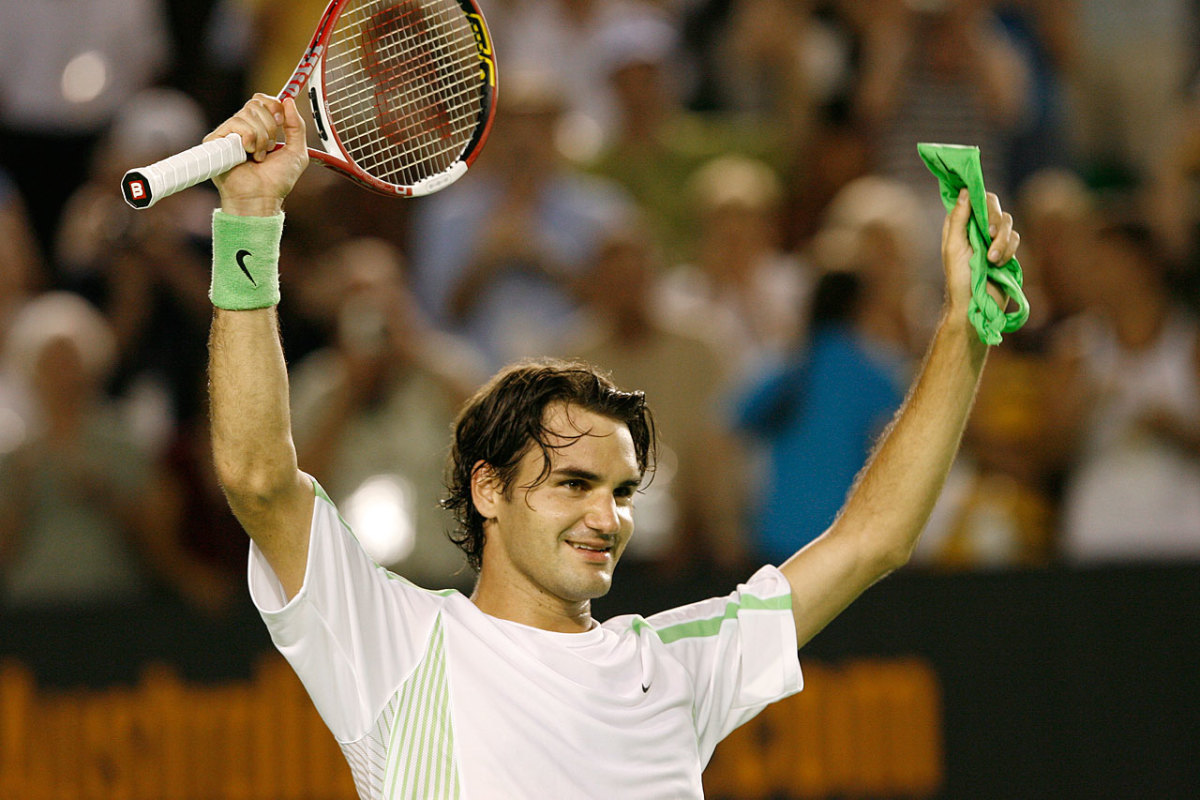
The 24-year-old Federer tied Mats Wilander and John McEnroe with his seventh major title, defeating Marcos Baghdatis in the final.
2006 Wimbledon
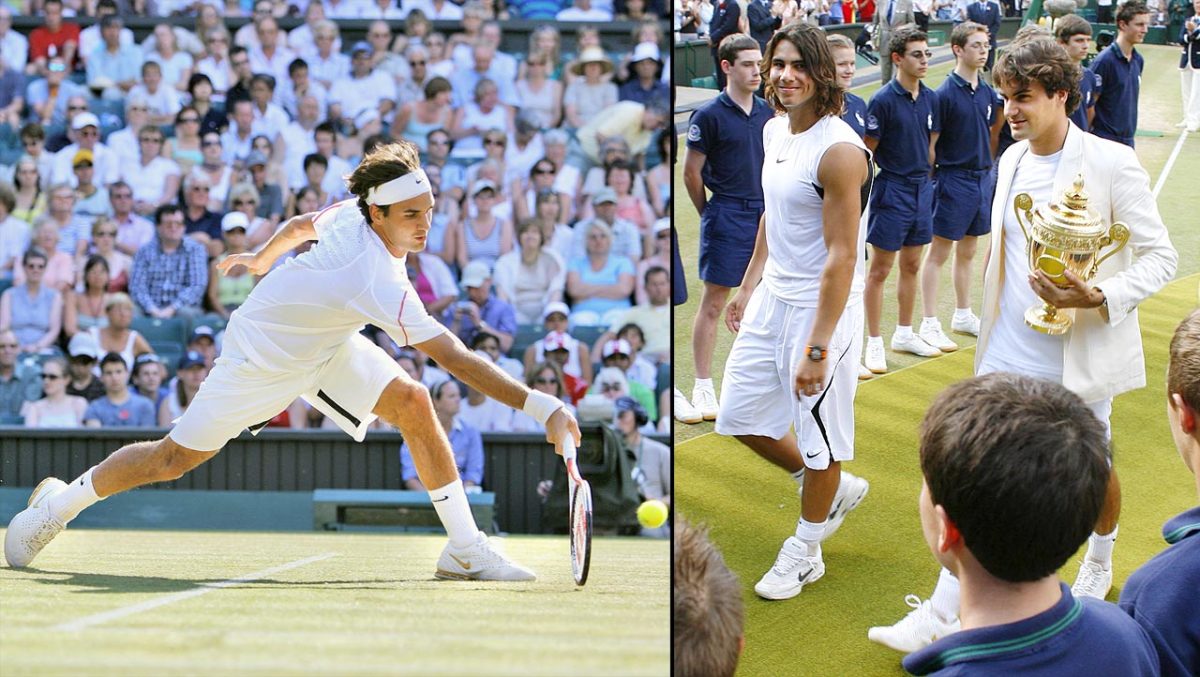
Federer had been 1-6 lifetime against Rafael Nadal, including a loss in the 2006 French Open final, before subduing the Spaniard for his fourth Wimbledon championship in a row. But in pushing Federer to four sets in the final, Nadal served notice that he was more than just a clay-court wizard.
2006 U.S. Open
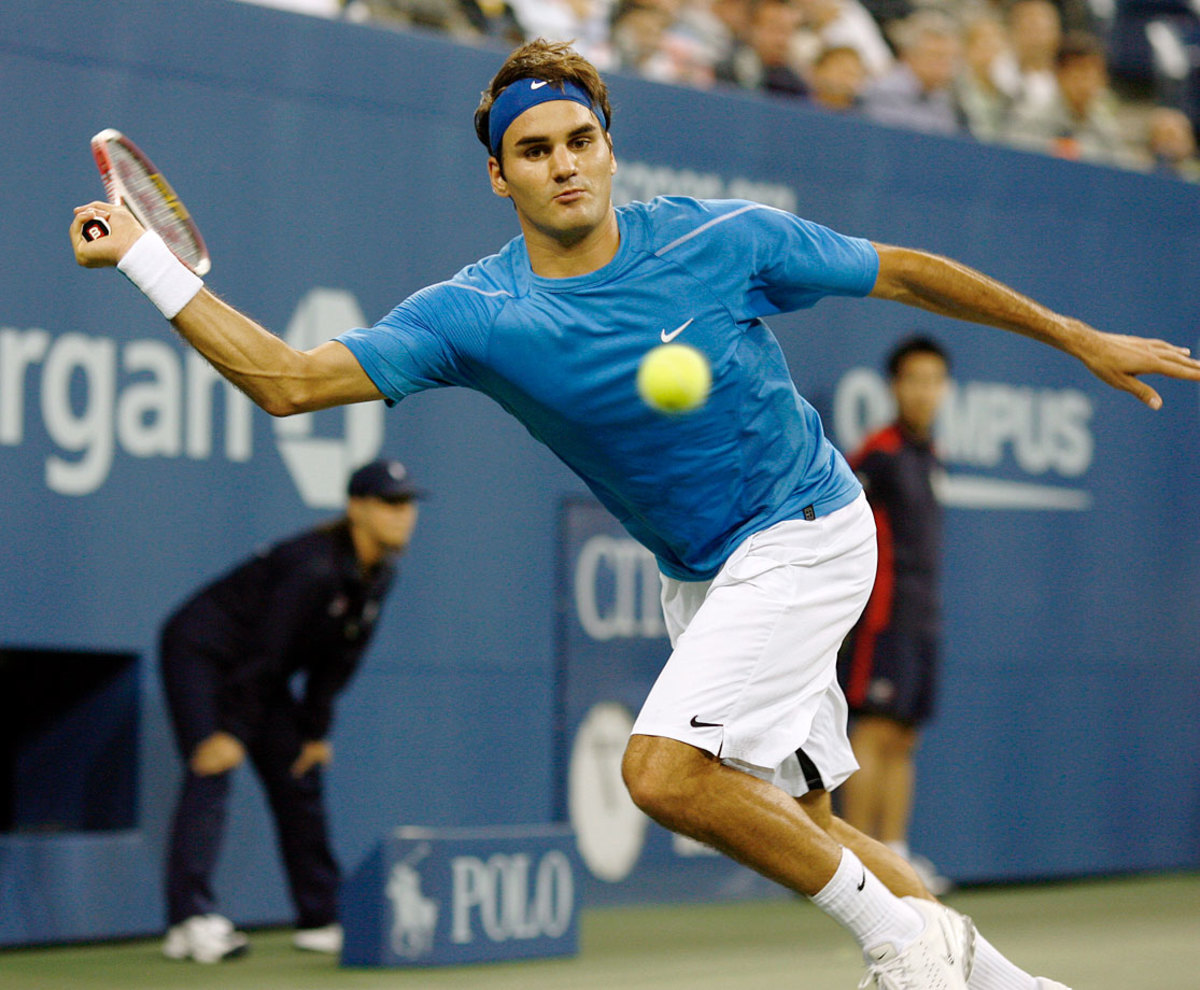
With yet another victory against Andy Roddick, Federer won his third U.S. Open in a row and capped another year with three major titles.
2007 Australian Open
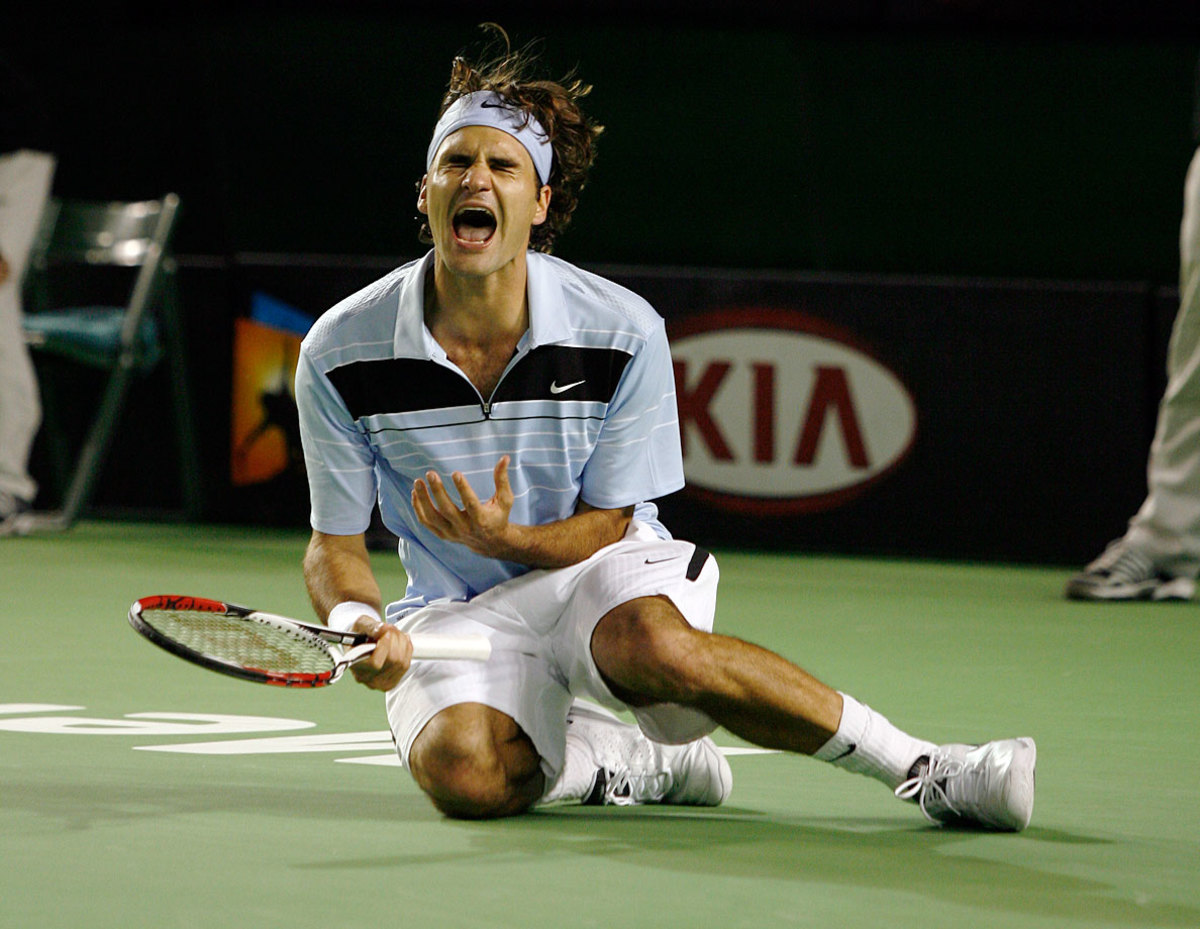
Federer won his 10th major in dominant fashion: He didn't drop a set in Melbourne, handling Tommy Robredo in the quarterfinals, Andy Roddick in the semifinals and Fernando Gonzalez in the final.
2007 Wimbledon
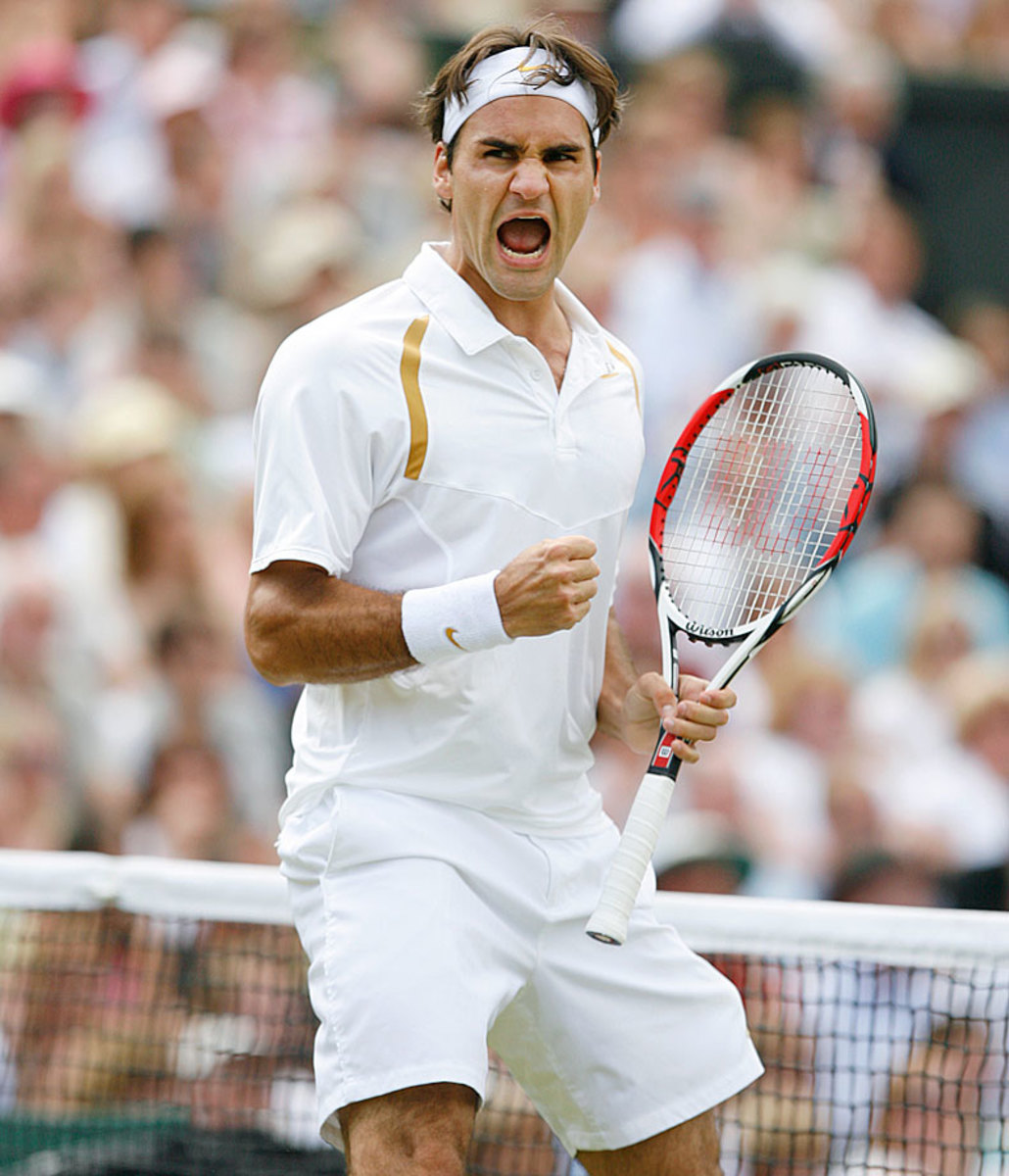
Federer matched Bjorn Borg with both his five consecutive Wimbledon title and 11th major overall after edging three-time French Open champion Nadal 7-6 (7), 4-6, 7-6 (3), 2-6, 6-2, the Swiss star's 54th victory in a row on grass.
2007 U.S. Open
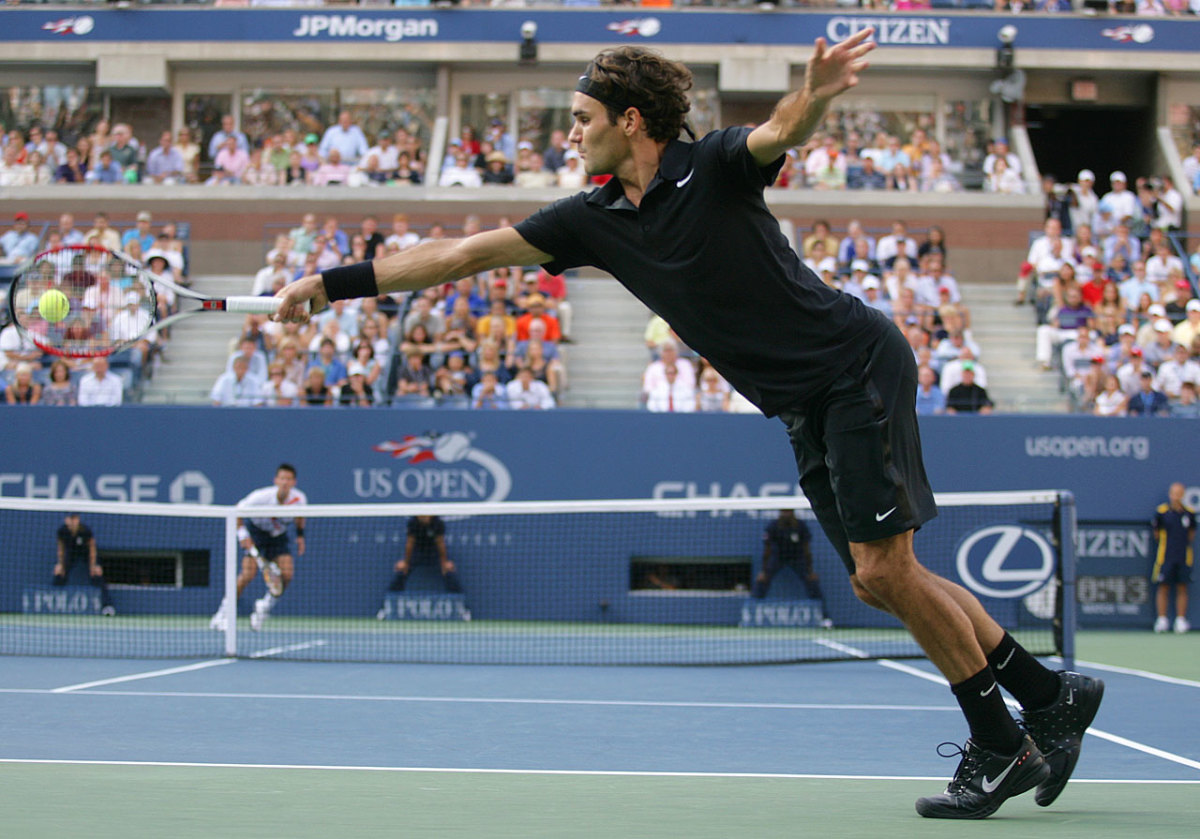
Novak Djokovic squandered seven set points in the final against Federer, who prevailed 7-6 (4), 7-6 (2), 6-4 to become the first player in the Open era (since 1968) to win four straight U.S. Open titles.
2008 U.S. Open
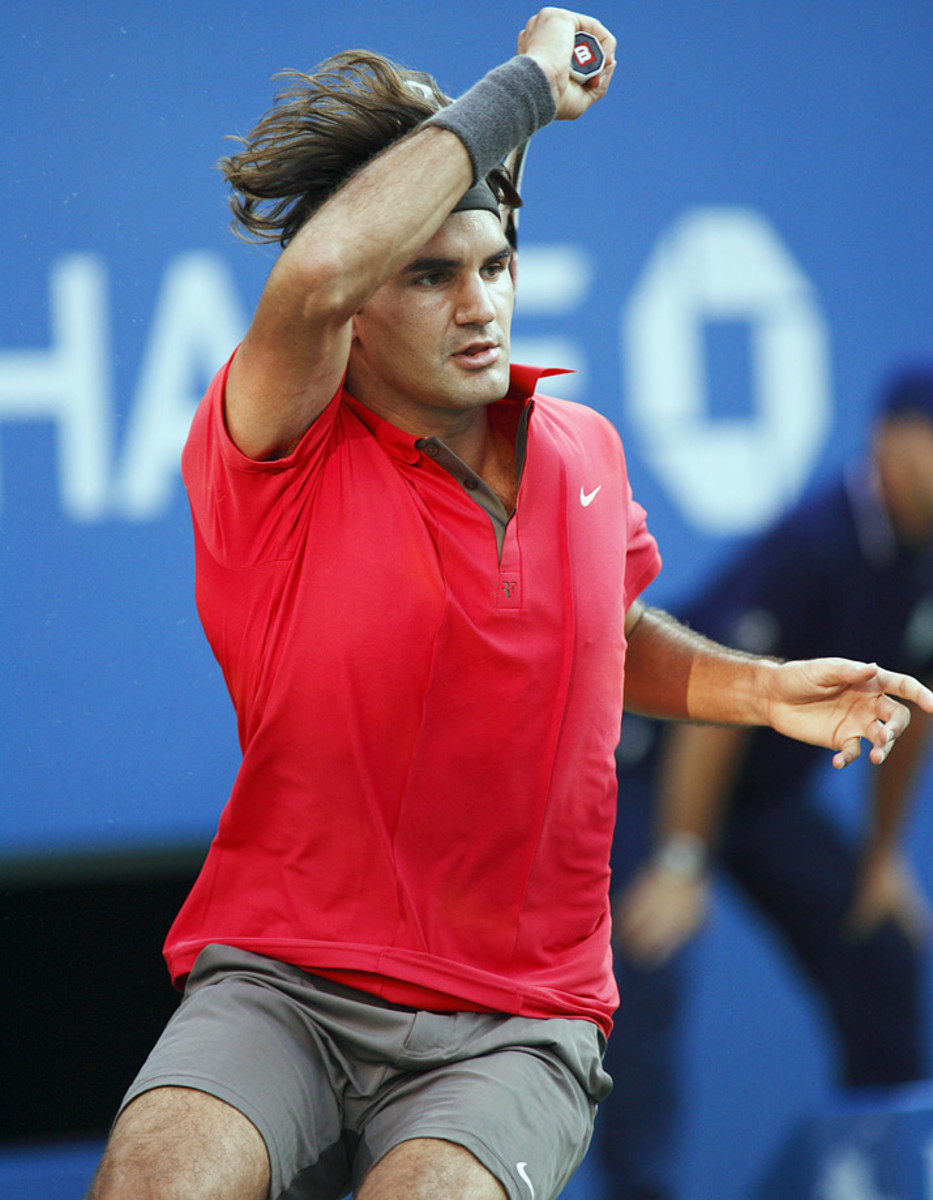
Federer entered the U.S. Open near the end of a down year by his lofty standards: After a bout with mononucleosis, he had failed to win a Grand Slam title, had won only two minor titles and had ceded the No. 1 ranking to Rafael Nadal. But the No. 2 seed survived a five-setter against Igor Andreev in the fourth round and went on to stop Andy Murray in the final.
2009 French Open
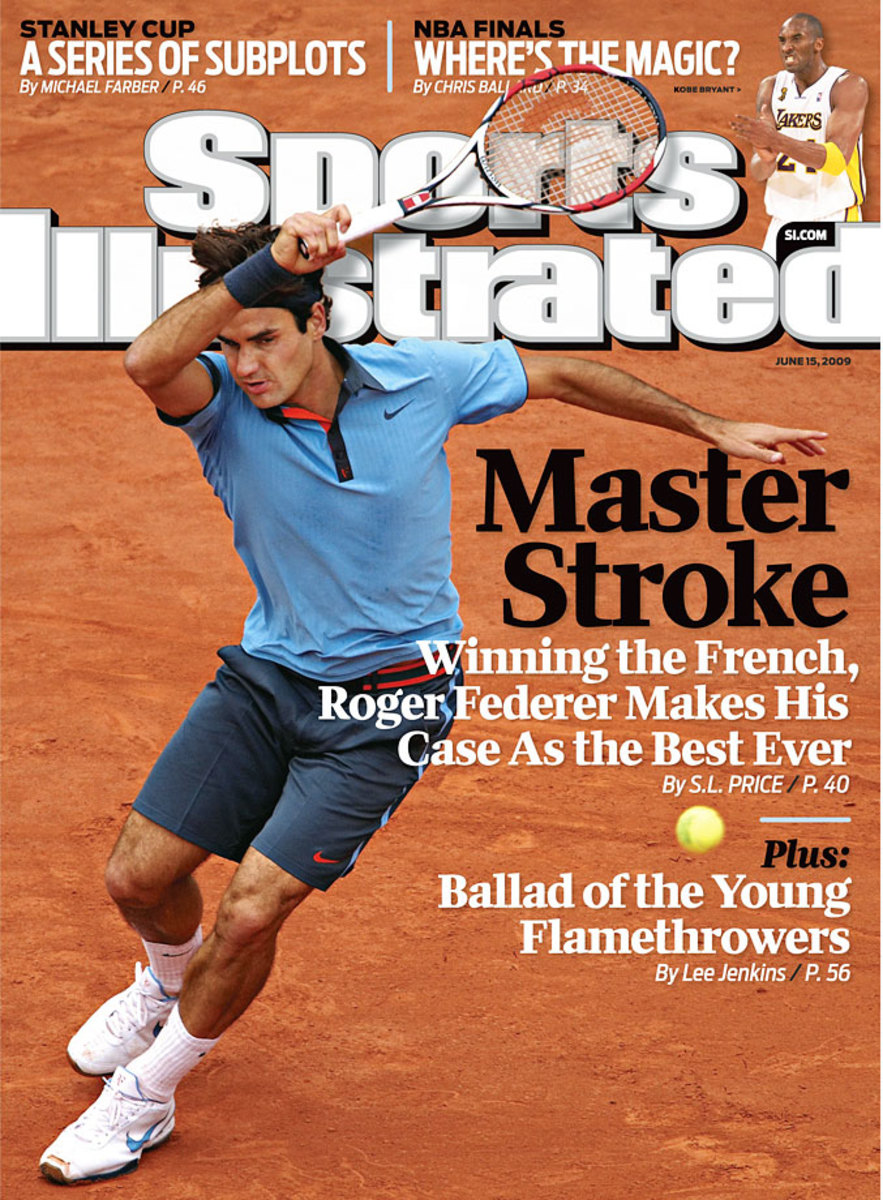
With a victory against surprise finalist Robin Soderling (who had stunned Rafael Nadal in the fourth round), Federer won his first title at Roland Garros, tied Pete Sampras' record of 14 major championships and became the sixth man to complete the career Grand Slam.
2009 Wimbledon
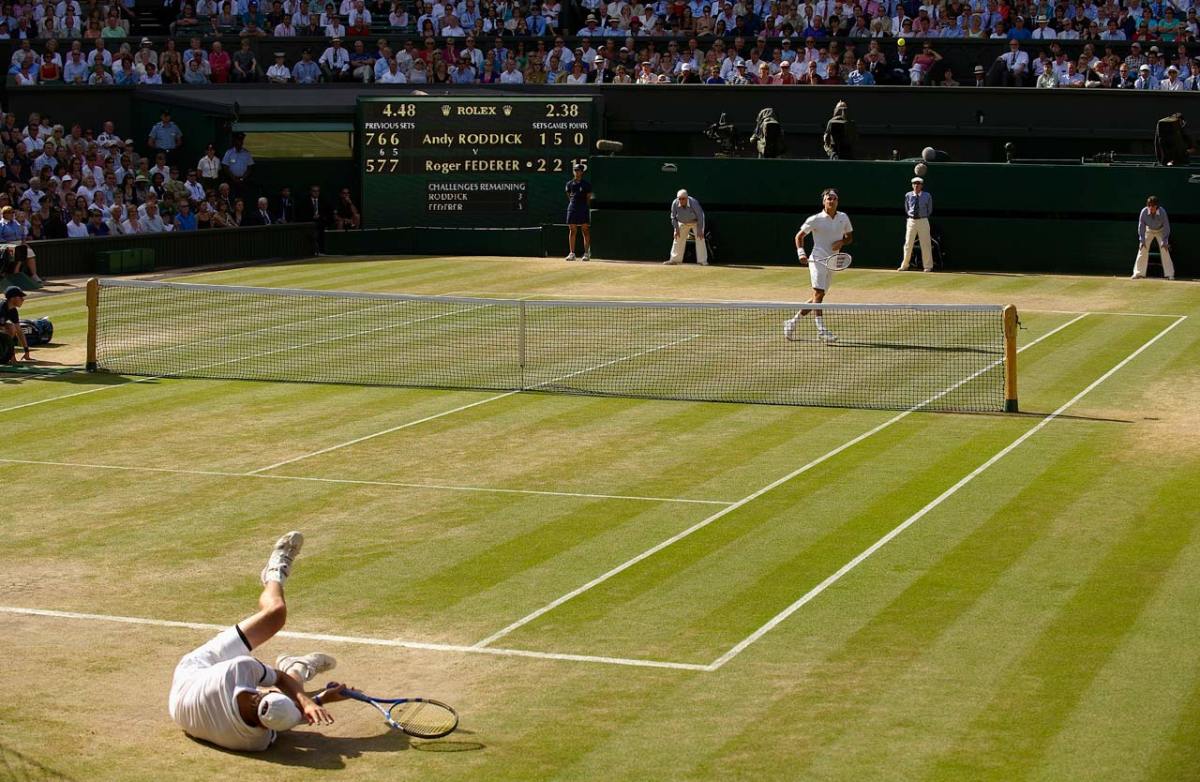
Federer moved ahead of Pete Sampras for most Grand Slam titles with his sixth victory at Wimbledon, which unfolded without injured defending champion Rafael Nadal. Federer outlasted Andy Roddick in a marathon match that went to 16-14 in the fifth set. Federer served 50 aces and overcame the resilient American 5-7, 7-6 (6), 7-6 (5), 3-6, 16-14. The 30 games in the fifth set established a record for the most games played in any set in a Wimbledon singles final.
2010 Australian Open
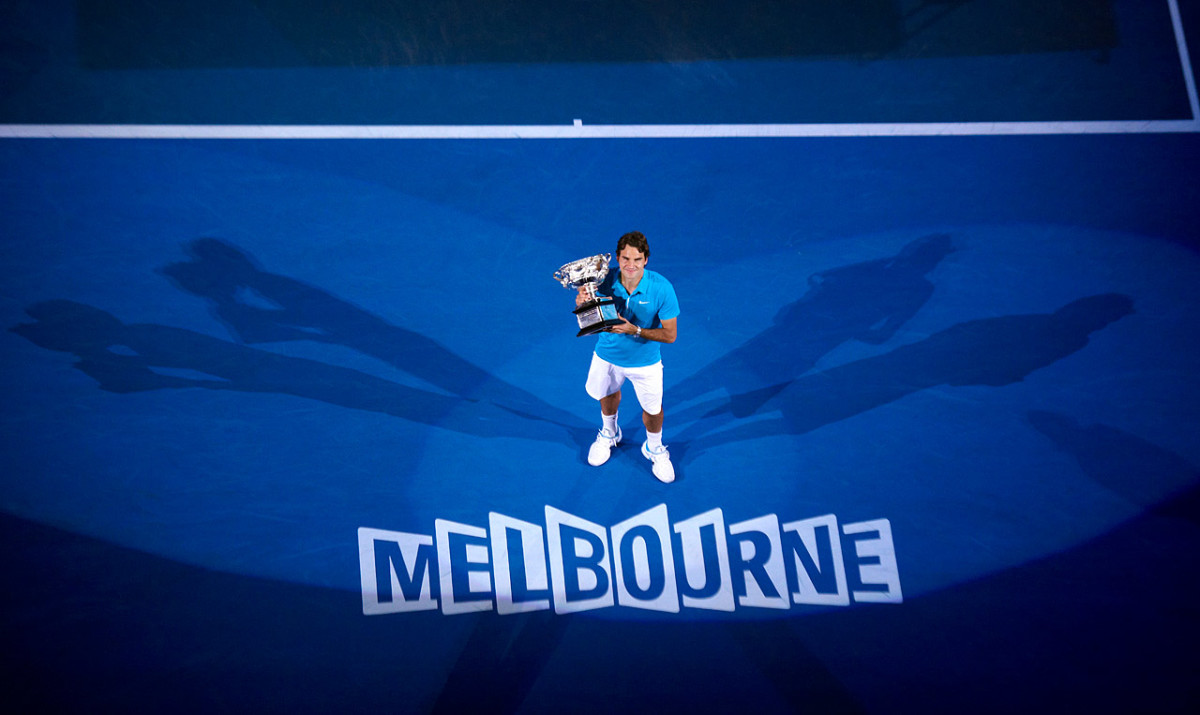
Playing in his 22nd Grand Slam final, Federer was in rare form, dropping fifth-seeded Andy Murray 6-3, 6-4, 7-6(11) at the Australian Open for Grand Slam title No. 16.
2012 Wimbledon
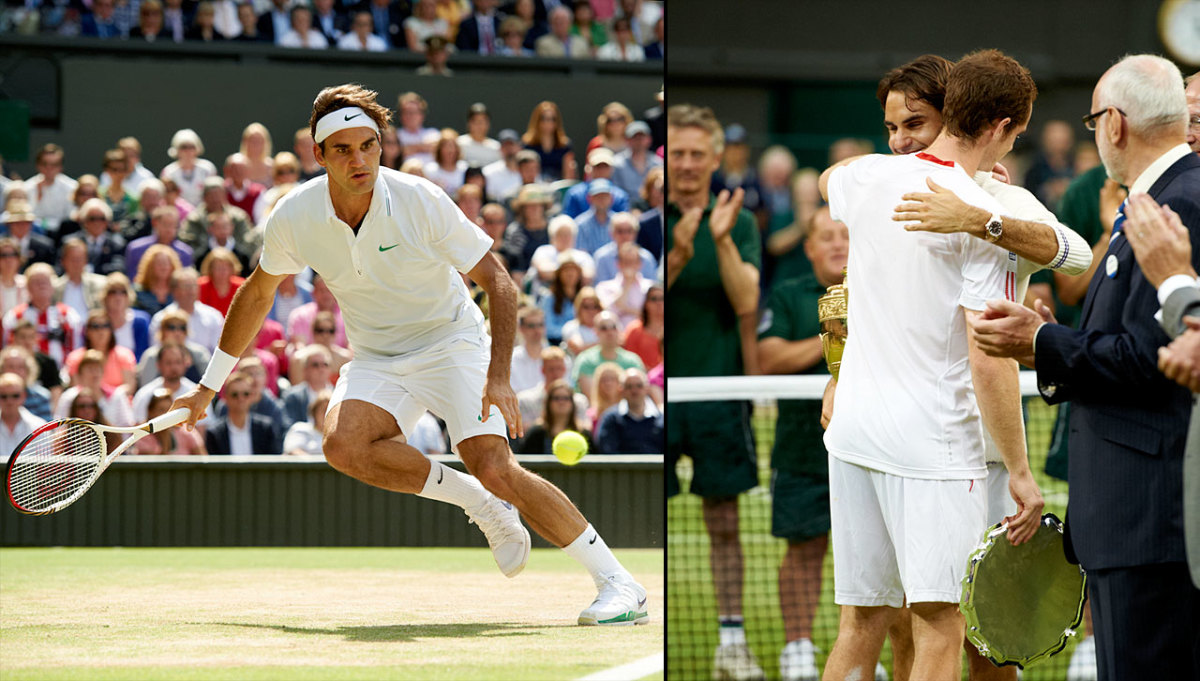
The 30-year-old Federer finally equaled Pete Sampras' record at the All England Club, and won his 17th Grand Slam title overall, by beating Andy Murray 4-6, 7-5, 6-3, 6-4.
While in Manhattan
If you're staying in Manhattan, take some time for some of these:
Sara Errani blows up after chair umpire makes a terrible call
• Check out the High Line on the West Side, which is just tremendously cool.
• Beyond the MOMA, the Met, and Guggenheim, check out the Frick, the Morgan and the Museum Art of Design on Columbus Circle. If you’re feeling adventuresome, go to Williamsburg in Brooklyn. And if you take the train from Grand Central Station, take a few minutes to walk around the terminal.
• Koreatown, in the low 30s just east of Penn Station, is an easy walk from a midtown hotel, and many of the joints are open 24 hours. Same for the "Curry Hill" Indian restaurants on Lexington in the high 20s.
• Run the six-mile loop in Central Park or stroll around the Jacqueline Kennedy Onassis Reservoir.
• Hop on a Citibike.
• Just walk around. It's hard to get lost given Manhattan's grid system, and you're bound to stumble past something interesting.
